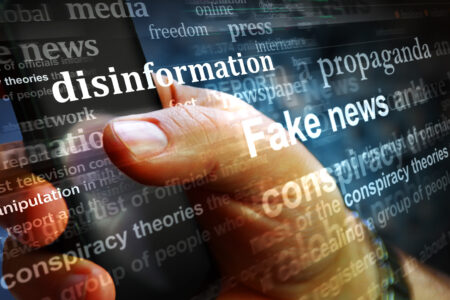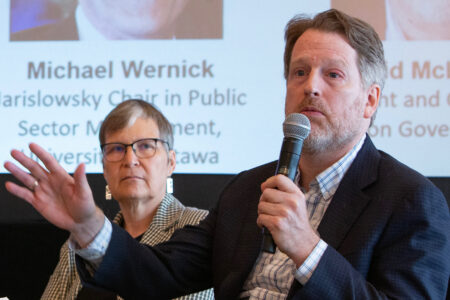
Over the past half century, Hollywood’s silver screen has elevated journalists into the pantheon of popular culture. From the legendary All the President’s Men to the contemporary classic Spotlight, the mythology around a collection of admirable, albeit quirky (and sometimes downright curmudgeonly) characters, keeping a watchful eye over society’s power brokers, has taken on a tinge of glamour.
Often obscured by these dramatic accounts of government corruption, industry maleficence or personal impropriety, journalism’s true story is best told through a much humbler protagonist: professional industry standards.
Indeed, as concerns about the potentially deleterious impacts that misinformation could have on October’s federal election continue to grow, journalistic standards represent a hallmark of credibility that can help the public effectively distinguish fact from fiction.
While journalists, unlike doctors, lawyers or accountants, are not part of a regulated profession, this does not mean they have carte blanche to run amok in a lawless, anarchic Wild West. Professional journalists are bound by an enduring, powerful series of industry norms that are passed down anecdotally from one generation of journalists to another and are also reflected in formal written codes of ethics that describe the terms of the special relationship that exists between journalists and citizens.
The Canadian Association of Journalists’ Ethics Guidelines, for example, state that journalists “serve the public interest, and put the needs of our audience — readers, listeners or viewers — at the forefront of our newsgathering decisions.” Similarly, Torstar’s Journalistic Standards Guide states: “The operation of a news organization is, above all, a public trust, no less binding because it is not formally conferred…Journalists who abuse the power of their professional roles for selfish motives or unworthy purposes are faithless to that public trust.”
While these are certainly high-minded ethics, in practice, any journalist worth their salt understands their professional duty to be fair, accurate and unbiased when covering, pursuing and writing a story. This means, for example, that opinion polls are properly contextualized; corrections are published when errors are discovered; opinion pieces are properly labelled; and that journalists treat sources who are experiencing “the worst day of their life” with sensitivity and care.
In their seminal work The Elements of Journalism, first released in 2001, Bill Kovach and Tom Rosenstiel describe with great precision the “mystery of consistency” that has allowed professional standards to remain a kind of constant in an ever-changing and uncertain digital world. The strength and resilience of journalistic standards, their research indicates, is rooted in the fact that they have been historically tied to journalism’s core mission: to provide citizens with the information they need to effectively govern themselves.
The fascinating part of this analysis is that it casts journalism standards not as esoteric, disconnected principles, but rather as living, breathing creatures that are capable of evolving to meet the needs of new environments and platforms. To see the dynamism of this theory in action, one need only examine the ever-changing guidelines developed by or for journalists on how to effectively report on many sensitive issues, including suicides, addictions, trauma and mental health; these resources are being championed by many groups in Canadian journalism circles.
Discussions about professional standards in journalism may not be sexy. But what other simple means do citizens have to help them differentiate ethical journalism from the online propagandists, political partisans and conspiracy theorists who exist for the sole purpose of peddling misinformation and special agendas?
Professional standards and ethics for confirming, verifying and/or contextualizing information play a critical role in a time when everyone with an internet connection can be a proprietor of their own virtual press. While the development and use of accepted standards lack a “Hollywood moment,” these codes provide a priceless public service in the event that a tsunami of false or misleading information begins to wash up on our digital shores.
For what this story lacks in glitz and glamour, it makes up for with healthy doses of truth and substance. As Canadians head to the polls this autumn, that’s very much a story worth sharing.
This article is part of The media and Canadian elections special feature.
Photo: Shutterstock/By wellphoto
Do you have something to say about the article you just read? Be part of the Policy Options discussion, and send in your own submission. Here is a link on how to do it. | Souhaitez-vous réagir à cet article ? Joignez-vous aux débats d’Options politiques et soumettez-nous votre texte en suivant ces directives.









